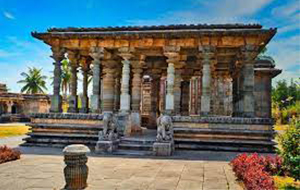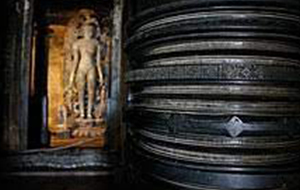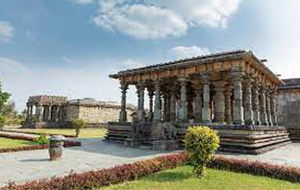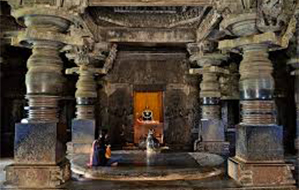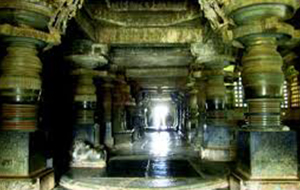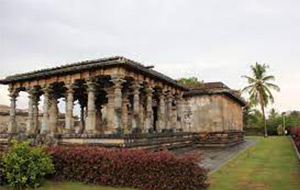Jain Basadi complex in Halebidu, Hassan district consists of three Jain Basadis (Basti or temples) dedicated to the Jain Tirthankars Parshvanatha, Shantinatha and Adinatha. The complex is situated near Kedareshwara temple and Dwarasamudra lake. These temples were constructed in the 12th century during the reign of Hoysala Empire along with Kedareshwara temple and Hoysaleswara Temple have been proposed to be listed under UNESCO World Heritage Site.
Halebidu was the capital of the Hoysala Empire between the c. 11th to 14th century CE when Jainism maintained a strong presence in the region. The region was called Dorasamudra or Dwarasamundra during the rule of Hoysala. Bittiga (later became Vishnuvardhana), is considered the greatest ruler of Hoysala kingdom and was a Jain till around 1115 after which he converted to Vaishnavism under the influence of the Hindu saint Ramanujacharya. However, he still recognized Jainism on par with Hinduism. During their regime, Hinduism and Jainism co-existed with utmost religious harmony. Vishnuvardhana’s wife Shantala Devi, remained a follower of Jainism. These temple were later maintained by Maharaja of Mysore. There are three basadis in this complex:
The Parshvanatha Basadi was built by Boppadeva in 1133 A.D. during the reign of King Vishnuvardhana. Boppadeva was the son of the notable Gangaraja, a minister under Hoysala King Vishnuvardhana. The construction of the temple coincided with the victory of Narasimha I as the royal heir to the throne. The deity therefore is called Vijaya Parsvanatha (lit, “victorious Parsvanatha”).
The Shantinatha Basadi was built around 1192 A.D., during the reign of Veera Ballala II.
The Adinatha Basadi is the smallest of the Jain basadis also built in c. 12th century. A monolith of Bahubali which was present inside this temple but is now displayed outside Halebidu museum.
The temples along with the capital were plundered and destroyed twice, by Malik Kafur, general of Alauddin Khalji during the Siege of Dwarasamudra in 1311 and by Sultan Muhammad bin Tughluq in 1326. The Wodeyar of Mysore & Ummathur (1399–1610), Nayakas of Keladi (1550–1763) were hostile Jains. In 1683, they stamped linga symbol in the main basati of Jains in Halebid and Jains were forced to perform Shiva rites.


